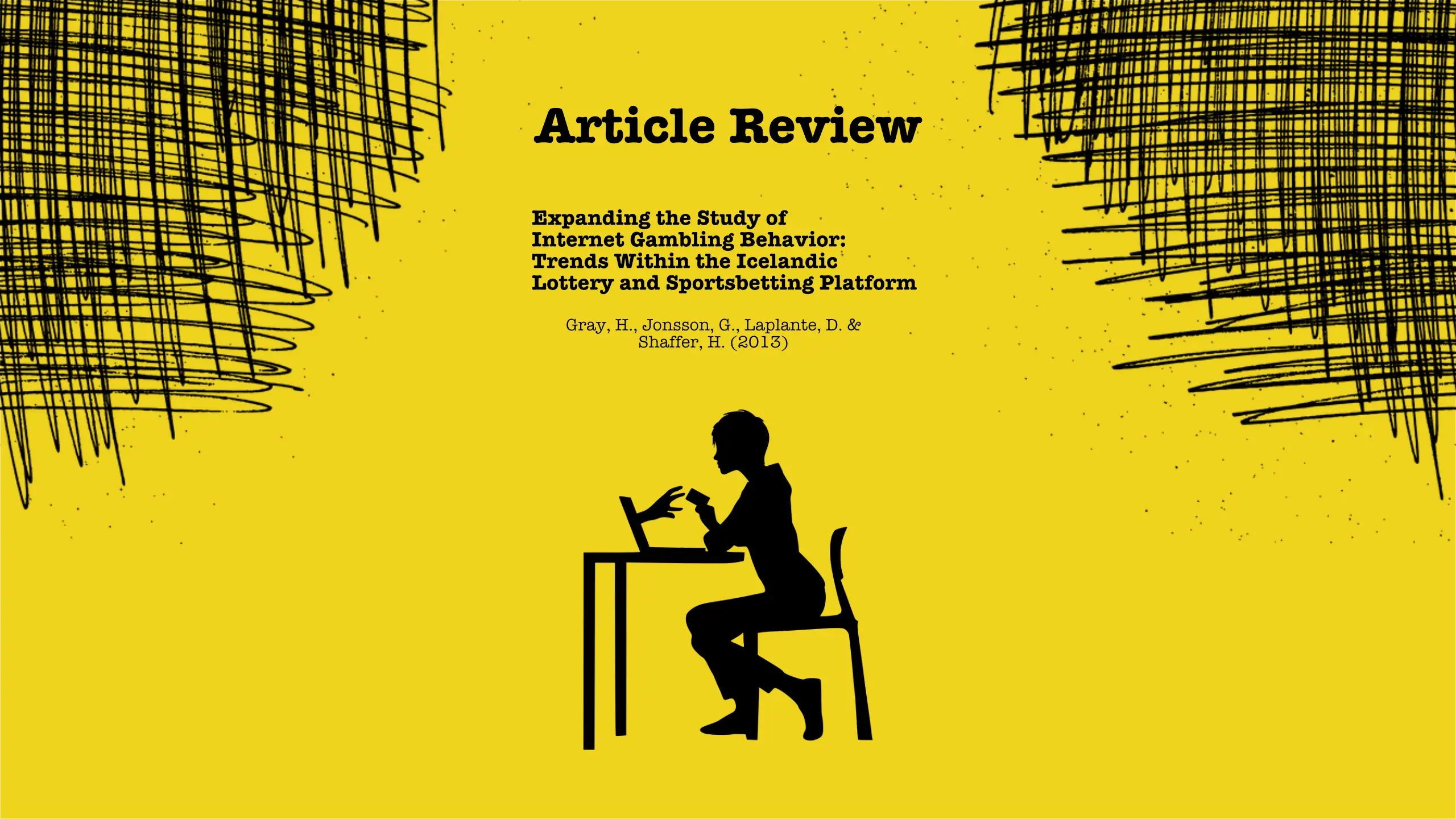The increasing accessibility of online gambling has raised questions about whether Internet gambling poses greater risks than traditional offline forms.
In Expanding the Study of Internet Gambling Behavior: Trends Within the Icelandic Lottery and Sportsbetting Platform (Gray, Jonsson, LaPlante & Shaffer, 2013), the authors explore gambling frequency, spending patterns, and demographic differences using behavioral data from Icelandic online gamblers.
The findings reveal that while most bettors gamble moderately, a small but significant minority exhibit high-risk patterns, highlighting the need for differentiated harm-reduction strategies.
Key Concepts
1. Distinguishing between frequency and expenditure
One of the most valuable contributions of the study is the segmentation of bettors based on two independent risk dimensions:
- Betting frequency (how often they play)
- Betting expenditure (how much they spend)
The data show that approximately:
- 2% of players are extremely high spenders;
- 2% are extremely frequent bettors;
- 10–15% spend or bet at high levels;
- The majority gamble at low frequency and expenditure.
These findings demonstrate that frequent betting and high spending represent different risk profiles, requiring tailored prevention and intervention approaches.
“A minority of users typically account for a majority of service usage … highly intense subscribers: those who wagered the most money and those who made the most bets.”
2. Online gambling is not inherently riskier
Contrary to popular belief, the authors found that Internet gambling is not inherently riskier than traditional forms of gambling.
Online players tend to place bets 3–7 days per month and average fewer than 2.5 bets per gambling day.
While the convenience, accessibility, and anonymity of online gambling can potentially promote excessive use (Griffiths, 2003), actual data show that the vast majority of users gamble moderately and 96% of the total bet amount is lost, reflecting the typical expected return structure rather than unusual risk.
The apparent perception of higher online risk may partly stem from self-report biases — overestimation of activity or selective recall by participants in earlier studies.
3. Cultural and contextual factors
The study highlights the importance of cultural norms and regulatory context in shaping gambling behaviors.
In Iceland, lottery proceeds are often linked to charitable and philanthropic causes, which may reduce materialistic motivations for gambling and limit excessive betting behaviors.
These contextual nuances emphasize that national regulation and cultural framing can moderate the risks associated with gambling participation.
4. Emerging risks: social sharing and live betting
Although online gambling may not inherently increase risk, certain digital behaviors introduce new potential harms.
One such behavior is the sharing of betting tickets online, which can encourage social validation of betting and promote competitive or excessive play among peers.
Similarly, in-play or live betting — where wagers are placed during ongoing events — has been linked to impulsivity and problem gambling, representing a modern form of risk exposure within otherwise moderate gambling environments.
“Some gamblers view sports betting as a way to fulfill the need to socialize with friends and other people.” (Fang & Mowen, 2009)
5. The spectrum of online gambling participation
The study revealed an interesting participation pattern:
- Around 80% of users gamble moderately;
- 10–15% show elevated engagement;
- 2% are classified as extreme players;
- A large number of registered accounts remain inactive — users who neither deposit nor place bets.
This “silent majority” raises questions for future research:
Why do users register without playing? Are they drawn by marketing campaigns, social curiosity, or a desire to explore without committing financially?
These questions suggest avenues for understanding digital engagement psychology in gambling contexts.
6. Policy and intervention implications
To mitigate risks and promote sustainable gambling behavior, the authors suggest that regulators and operators should:
- Restrict aggressive gambling advertisements;
- Reduce licensing proliferation;
- Encourage research on at-risk gambling groups;
- Monitor in-play betting patterns more closely.
Semi-professional and professional gamblers — who rely on gambling as a source of income — may also belong to structurally high-risk populations, as the occupational nature of their activity involves continuous exposure and emotional volatility.
Selected Citations
- “Convenience, accessibility, and anonymity — factors that might promote excessive gambling behavior for Internet gamblers.” (Griffiths, 2003; Griffiths & Parke, 2002; King & Barak, 1999)
- “A minority of users typically account for a majority of service usage … highly intense subscribers.”
- “Some industry analysts suggest that increasing the social nature of these services will decrease the rate of inactive accounts.” (Peoples, 2013)
- “Women tended to be drawn to lottery products, while a greater percentage of men engaged in English soccer sports betting.”
Academic Reference
Gray, H., Jonsson, G., LaPlante, D., & Shaffer, H. (2013). Expanding the Study of Internet Gambling Behavior: Trends Within the Icelandic Lottery and Sportsbetting Platform. Journal of Gambling Studies, 31.
External References
- Griffiths, M. D., & Parke, J. (2002). The Social Impact of Internet Gambling. Social Science Computer Review, 20(3), 312–320.
- Griffiths, M. D. (2003). Internet Gambling: Issues, Concerns, and Recommendations. CyberPsychology & Behavior, 6(6), 557–568.
- King, S. A., & Barak, A. (1999). Compulsive Internet Gambling: A New Form of an Old Clinical Pathology. CyberPsychology & Behavior, 2(5), 441–456.
- Peoples, G. (2013). Business Matters: Spotify, Deezer Inactive Accounts Are Just Part of Doing Business. Billboard Biz.
- Fang, X., & Mowen, J. C. (2009). Examining the Trait and Functional Motive Antecedents of Four Gambling Activities. Journal of Consumer Marketing, 26(2), 121–131.
